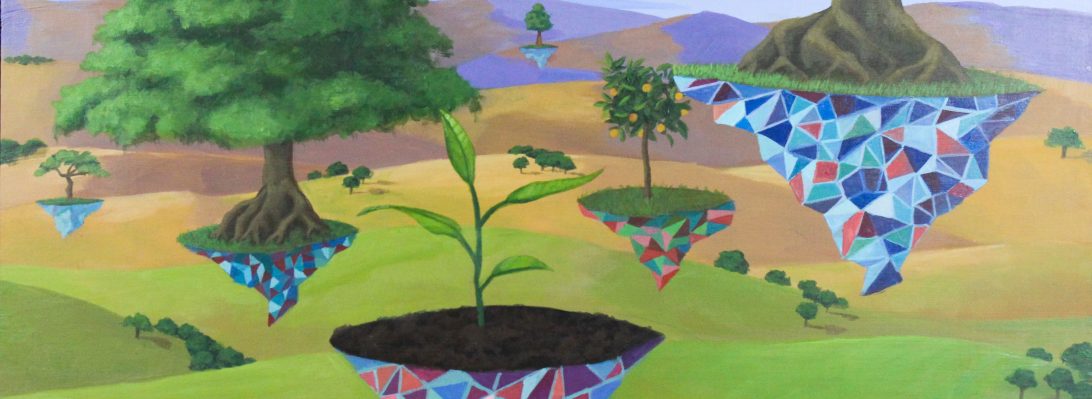
Even if you haven’t met Luisa Talamás, you’ve surely encountered her work. As art director assistant for ¿Qué Pasa, Ohio State?, Talamás crafts the layout and design of the magazine. She continues to explore connections between art and function as a student of industrial design at Ohio State University. We met in her campus haunt (Hayes Hall) where she spoke of her passion for industrial design and decision to move to Columbus, Ohio from San Marcos, Texas.
Talamás’ family moved from Chihuahua, Mexico in 2010 to escape the omnipresent threat of violence posed by the city’s drug cartels. While in Chihuahua, Talamás recalls the frequent kidnapping of classmates and sound of machine gunfire nearby her home. By the time Luisa internalized the danger of this organized crime as “normal,” her parents decided it was time to move for the health of their family. Without much planning, they packed everything and settled in Austin, Texas. There, Luisa enjoyed a few years of high school. When it came time for Talamás to attend college, she knew she wanted to study industrial design.
The road to college included many hurdles: Talamás dealt with citizenship barriers, a corrupt lawyer, and financial difficulties. Yet, she persevered to eventually enroll at the Ohio State University in a field that excites her. While she misses her family in Texas, she finds comfort in a strong church community here in Columbus and is working to learn more about the surrounding Latino population. Listen to part of Talamás’ journey on this week’s ¡Dímelo, Columbus!:
Falling in love with industrial design:
🎧 Listen (2:28)
“It turns out that industrial design is actually considered a mix, like if engineering and art had a baby… So it’s a very playful field. You’re playing, but you’re also making sure that products and systems make sense – are functional and efficient… but also aesthetically pleasing…”

The tenacious pursuit of an education:
🎧 Listen (7:13)
“There’s really no industrial design program in Texas… I ended up getting into the school in Chicago… At that point, my parents had been working with this lawyer to establish my residency because my dad was a citizen, so he could just claim us. My issue was that I had been accepted to that university and I had a scholarship, but I could not apply for financial aid because I did not have my social security number… We called the lawyer and for the past two years he had been giving us little updates [saying] ‘It’s just a matter of time’… ‘Everything is going the way it’s supposed to…’ We called the lawyer and this other person picked up the phone… What the lawyer did, the lawyer took the money that we had given him for the application process and he, he just ran away… The government had no record of me being here. So what that meant is that if I wanted to go to school, I couldn’t leave the state of Texas if I wanted to be a legal student…”
◈
“[That first year] I went to Texas State… I looked into Ohio State and then came across the [industrial design] program… It was a two-step acceptance process. That the first step was to be accepted into the pre-design program with 100 students. And then following that year we would go through a portfolio review where the faculty would select 16 students to go into industrial design… I moved with the idea of not giving it an option, just that you’re going to get in and you have to do it and make it work.”

Defined by culture, place, religion, and profession:
🎧 Listen (3:51)
“I was born and grew up in Mexico. I would say by heart, I am Mexican for sure. But my family is Lebanese and Palestinian… For special occasions we do Lebanese food. So I am a proud Lebanese – Mexican Lebanese – I guess?… I would say geographically, I don’t have a one location, it just changes depend where I’m at… I think professionally, a designer is a big term I use to describe myself… Design as a career or profession is sort of hidden… I think it’s a really cool badge to wear… I am [also] a Christian, I think that’s a really big part of my identity.”
